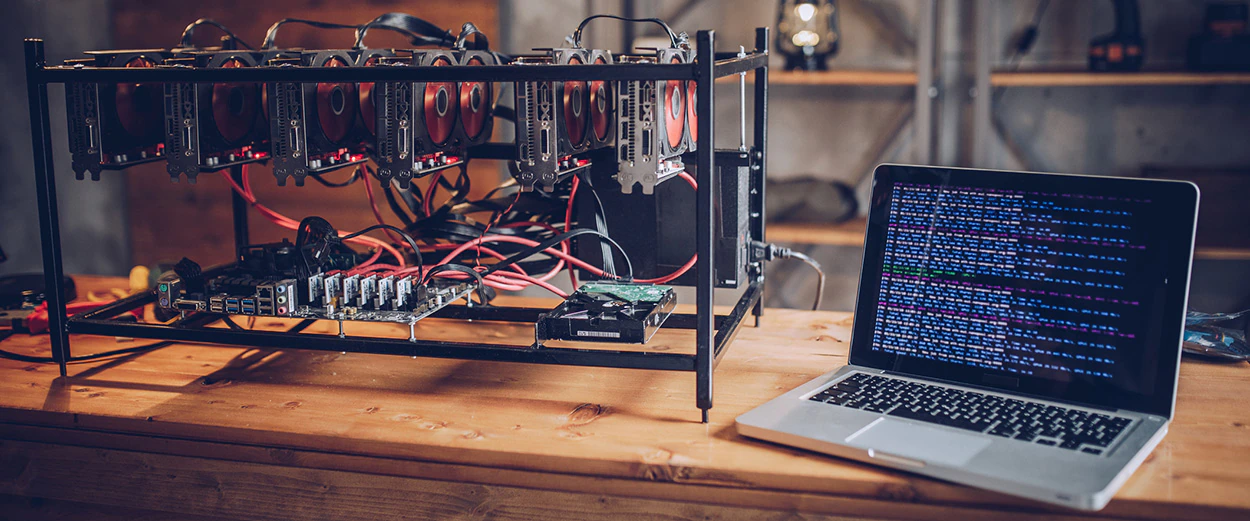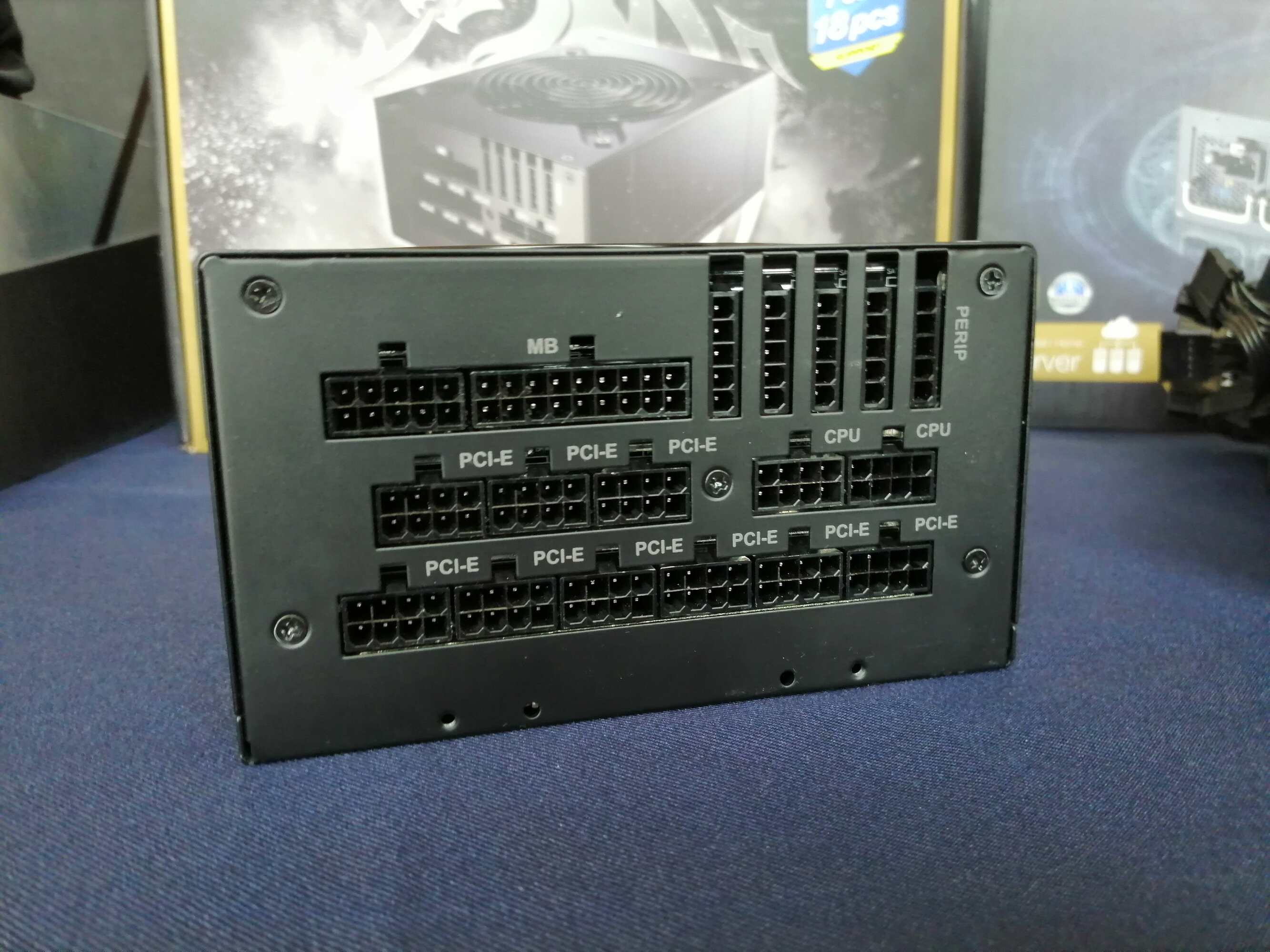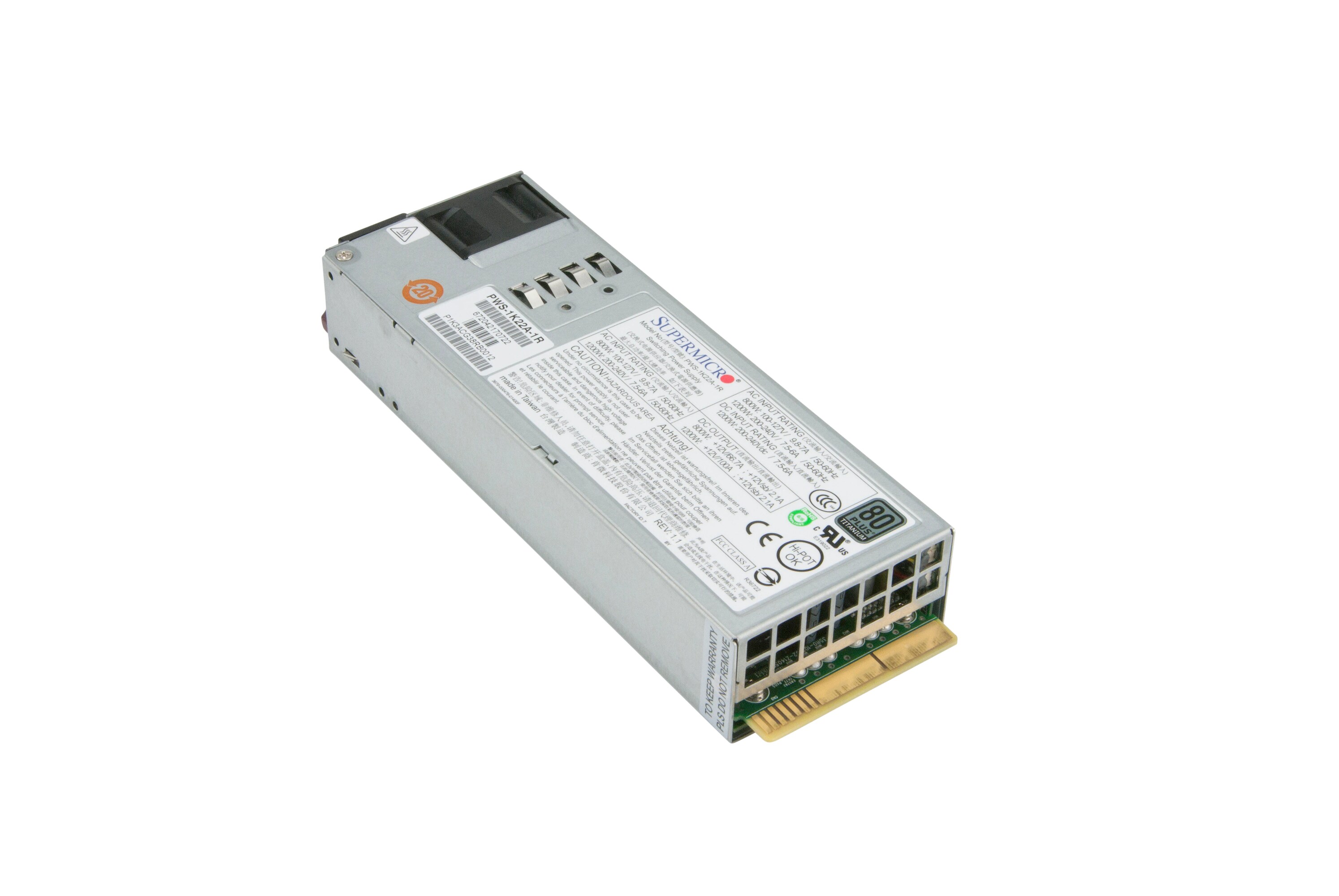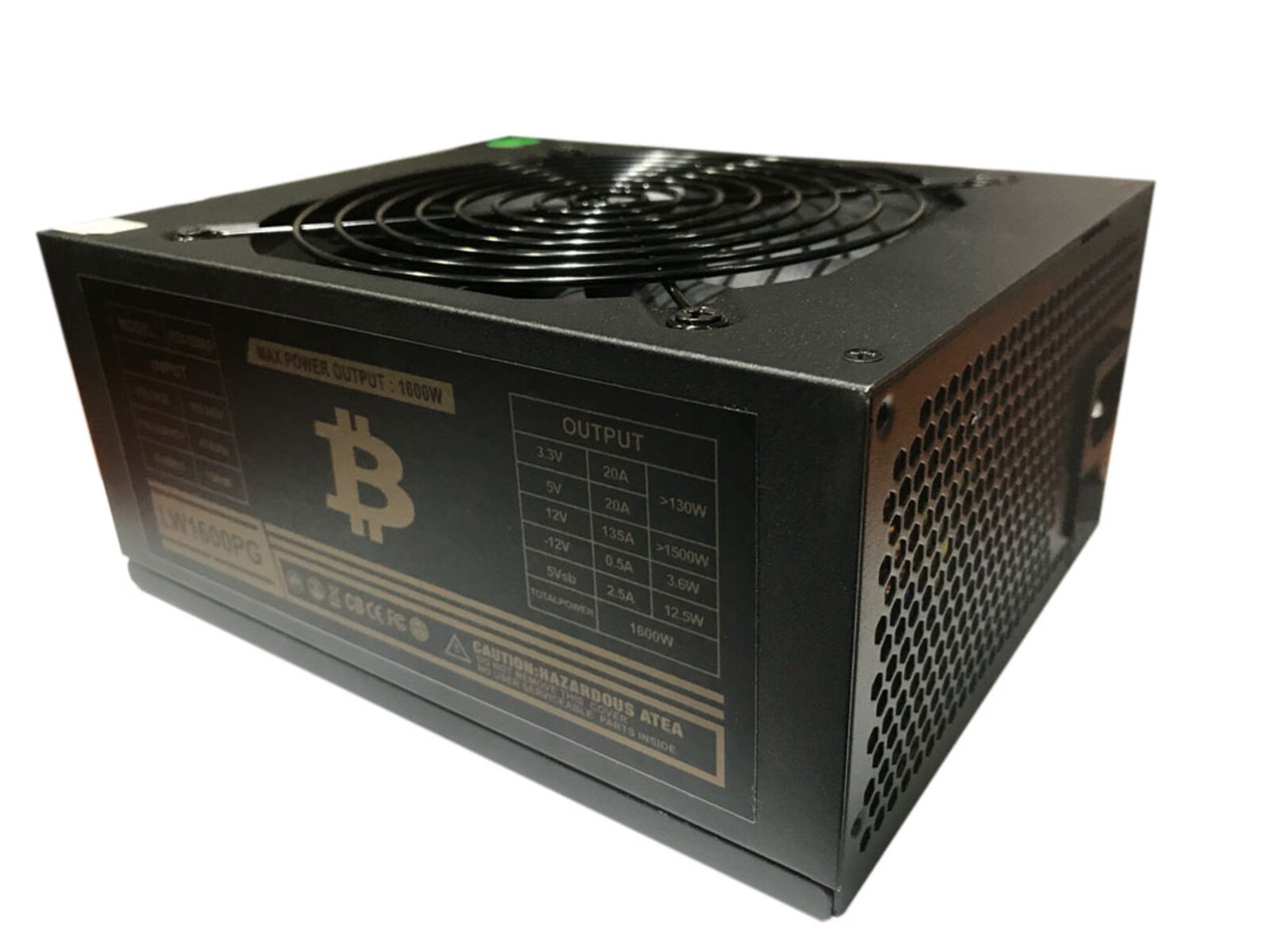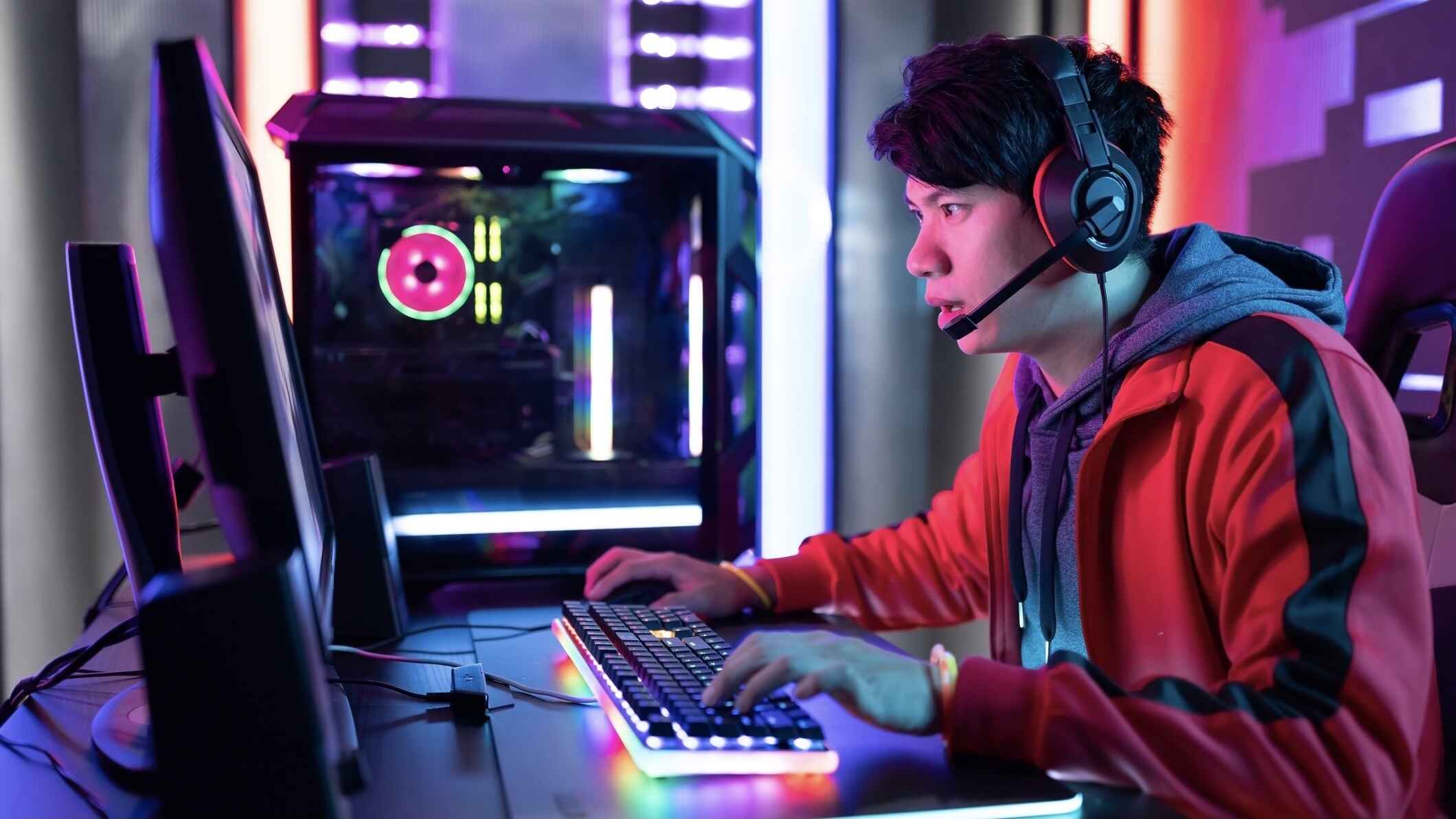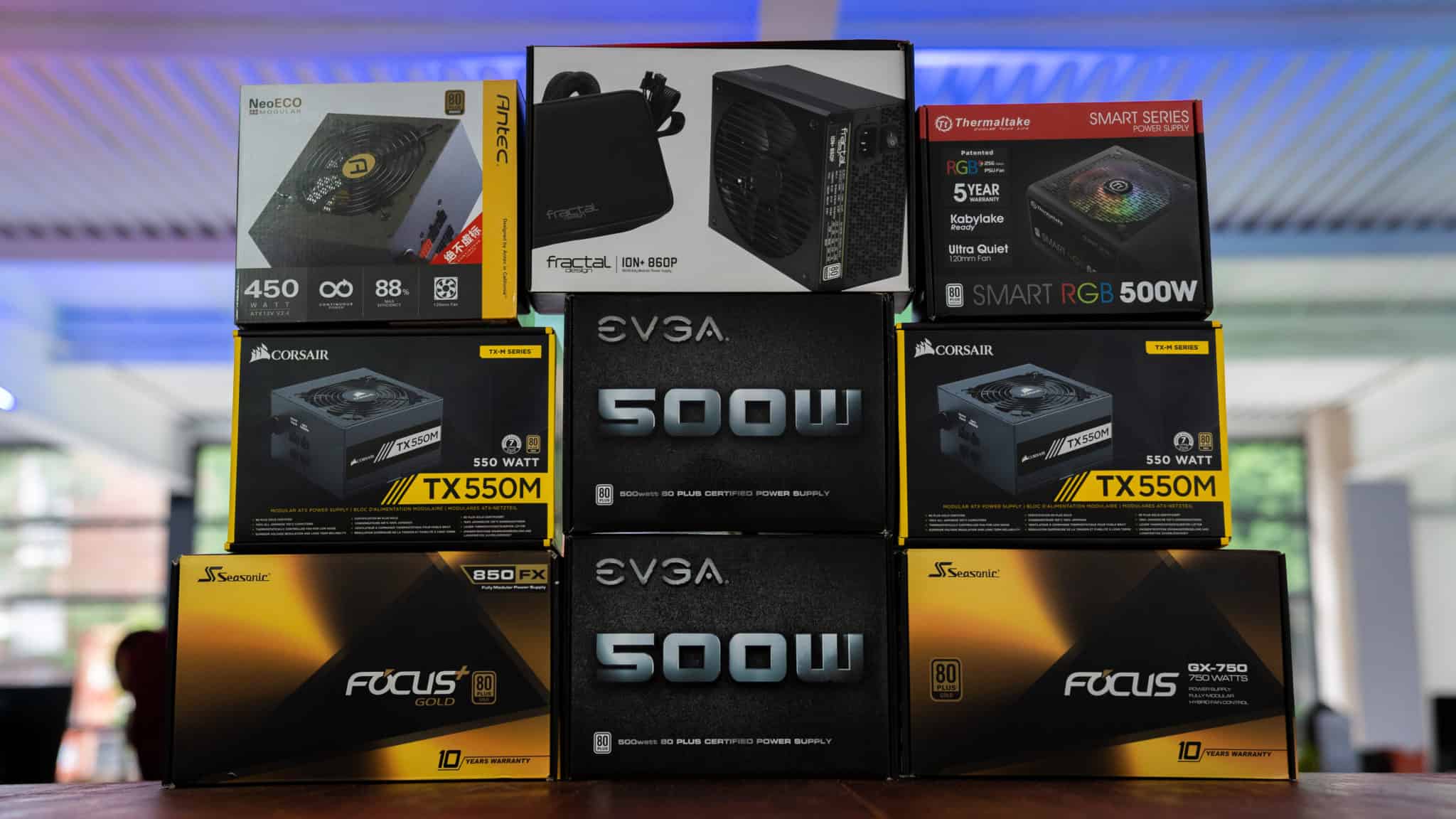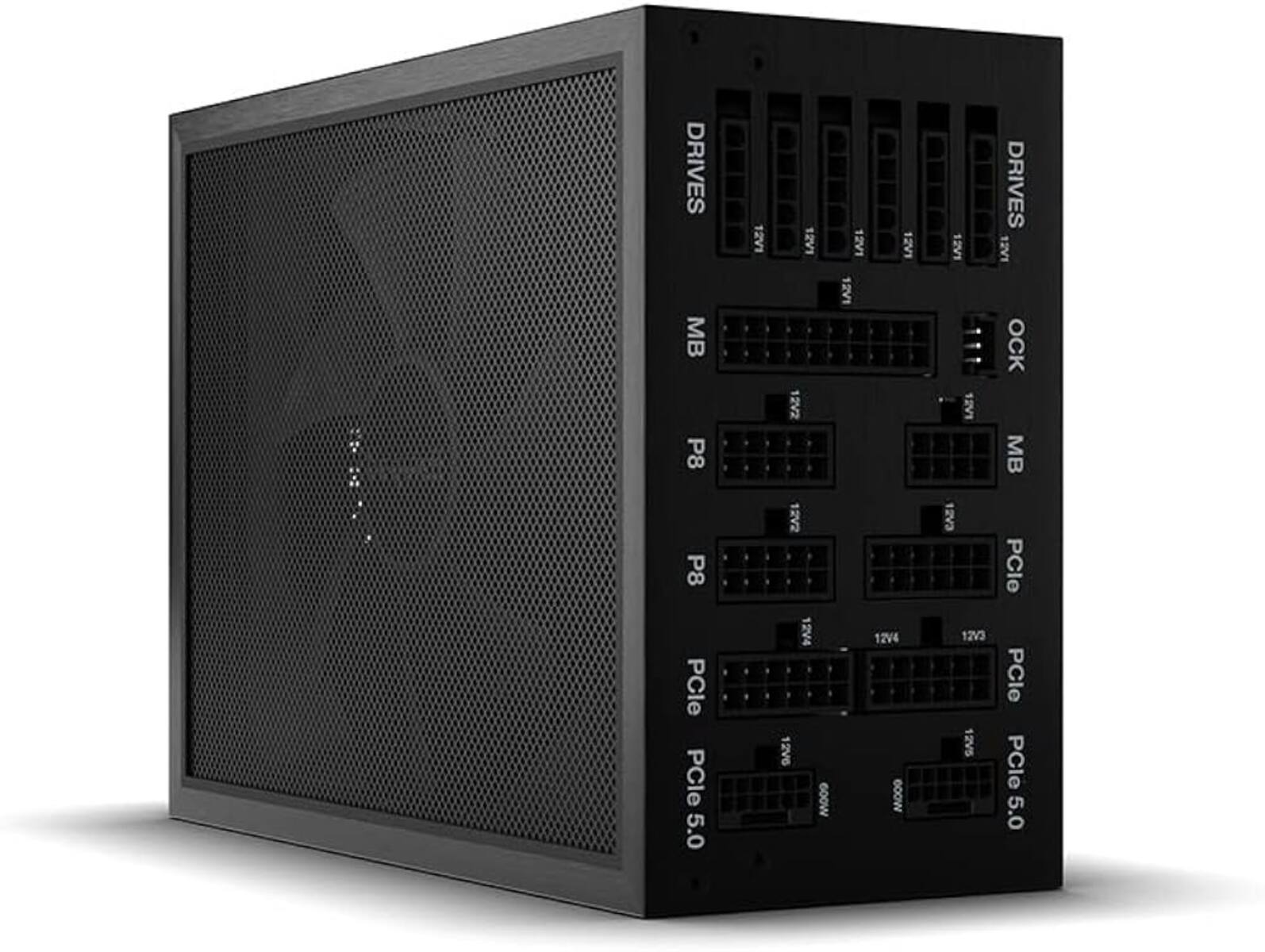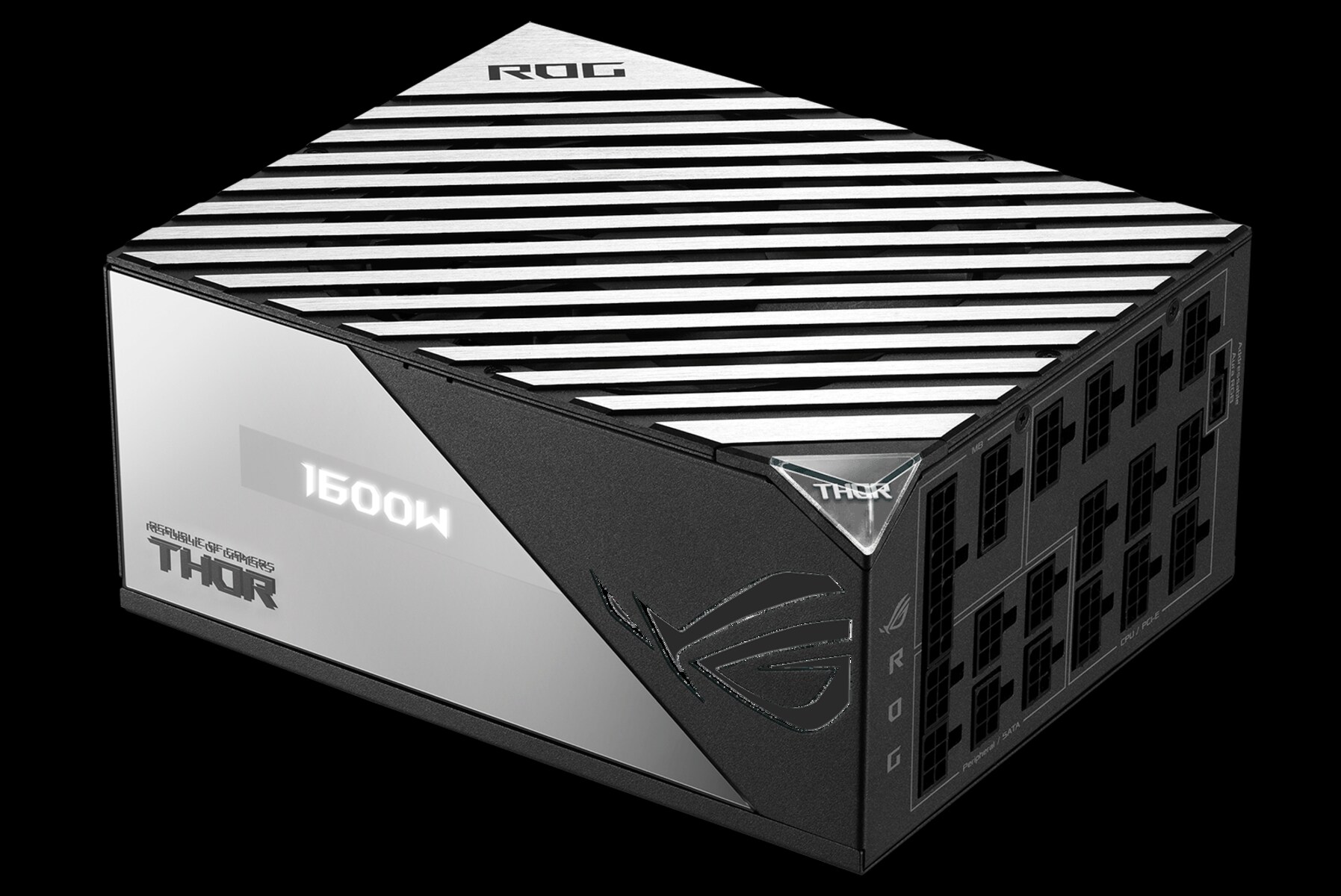Introduction
Welcome to the world of Bitcoin mining! If you’re interested in joining the exciting world of cryptocurrency and want to start earning Bitcoin on your PC, then you’ve come to the right place. Bitcoin mining is the process of solving complex mathematical problems to verify and record transactions on the Bitcoin network. In return for this effort, miners are rewarded with newly created Bitcoin.
In the early days of Bitcoin, mining could be done using a regular computer. However, as the network has grown and become more competitive, specialized mining hardware is now necessary to mine Bitcoin profitably. But don’t worry, you can still mine Bitcoin on your PC and participate in this digital revolution.
In this step-by-step guide, we will walk you through the process of mining Bitcoin on your PC. We will cover everything from understanding Bitcoin mining and checking your PC specifications to downloading and installing mining software, setting up a Bitcoin wallet, and joining a mining pool.
Please note that mining Bitcoin on a PC may not be as profitable as using specialized mining hardware. However, it’s a great way to get started and learn more about cryptocurrencies. Plus, you never know when the value of Bitcoin may skyrocket again!
So, if you’re ready to dive into the world of Bitcoin mining and potentially earn some digital currency, let’s get started with the first step: understanding Bitcoin mining.
Step 1: Understanding Bitcoin Mining
Before you start mining Bitcoin on your PC, it’s important to understand the basics of how the process works. Bitcoin mining involves solving complex mathematical problems using advanced computer hardware to validate and record cryptocurrency transactions on the blockchain.
Here’s a simplified explanation of how it works:
- Decentralized Network: Bitcoin operates on a decentralized network, meaning it doesn’t rely on a central authority like banks or governments. Instead, transactions are verified by a network of computers (miners) spread across the globe.
- Proof-of-Work: To ensure the security and reliability of the network, Bitcoin uses a consensus mechanism called Proof-of-Work. Miners compete to solve complex mathematical problems, and the first one to solve it gets to add the next block of transactions to the blockchain.
- Hashing and Block Reward: Miners use their computing power to find a specific value (hash) that fulfills certain criteria. This requires significant computational power and electricity. When a miner successfully mines a new block, they are rewarded with a certain amount of Bitcoin as well as transaction fees.
- Difficulty Adjustment: The difficulty of mining Bitcoin adjusts approximately every two weeks to ensure that miners solve blocks at a consistent rate. As more miners join the network, the difficulty increases, and vice versa.
- Halving: Approximately every four years, the block reward for miners is halved. This reduces the rate at which new Bitcoin is created and is designed to maintain scarcity and control inflation over time.
It’s important to note that mining Bitcoin on a PC today is not as profitable as it once was. The network has become highly competitive, and specialized mining hardware (ASICs) dominate the mining industry. However, mining on a PC can still be a rewarding experience and provide a deeper understanding of how cryptocurrencies work.
In the next step, we will discuss how to check your PC specifications to ensure it meets the minimum requirements for Bitcoin mining. Don’t worry if you don’t have a high-end gaming rig; you can still participate in the mining process with less powerful hardware.
Step 2: Check Your PC Specifications
Before you embark on your Bitcoin mining journey, it’s crucial to ensure that your computer meets the necessary specifications. While mining on a regular PC may not yield substantial profits, it can still be a great learning experience and an opportunity to be a part of the cryptocurrency ecosystem.
Here are the key specifications you need to consider:
- CPU (Central Processing Unit): While CPU mining is no longer as effective as it used to be, having a decent CPU is still important. Look for a processor with multiple cores and a high clock speed for optimal performance.
- GPU (Graphics Processing Unit): A good GPU is an essential component for mining cryptocurrencies. Look for a graphics card with high computational power. AMD and NVIDIA GPUs are popular choices.
- RAM (Random Access Memory): A sufficient amount of RAM is necessary for efficient mining. Ideally, you should have at least 8 GB of RAM, but more can be beneficial when running multiple mining software simultaneously.
- Hard Drive Space: Mining software and blockchain data can consume significant hard drive space. Ensure that you have enough storage available for the software and the blockchain files.
- Power Supply: Mining requires a stable power supply. Invest in a reliable power supply unit (PSU) with enough wattage to support your PC and mining hardware.
- Cooling System: Mining generates a lot of heat, so it’s essential to have proper cooling for your PC. Consider investing in additional cooling solutions like fans or liquid cooling systems.
- Internet Connection: A high-speed and stable internet connection is necessary for mining operations. Ensure that your internet service can handle the constant data exchange.
Keep in mind that the specifications mentioned above are a general guideline. The requirements may vary depending on the mining software and the specific cryptocurrency you intend to mine.
If you’re unsure about your PC specifications, there are various online tools available that can help you analyze your system and determine its mining capabilities. Additionally, consider joining online communities and forums dedicated to mining, where experienced miners can offer advice and suggestions based on your specific hardware.
Once you’ve confirmed that your PC meets the minimum requirements, you’re ready to proceed to the next step: downloading and installing the mining software. Stay tuned!
Step 3: Download and Install Mining Software
Now that you have checked your PC specifications and ensured that it meets the necessary requirements, it’s time to download and install the mining software. Mining software is essential as it allows your computer to connect to the Bitcoin network and participate in the mining process.
Here are the steps to download and install mining software:
- Research: Look for reputable mining software that is compatible with your operating system. Some popular options include CGMiner, BFGMiner, and EasyMiner. Take the time to read reviews and compare features to find the one that suits your needs best.
- Download: Visit the official website of your chosen mining software and navigate to the download section. Choose the version that is compatible with your operating system (Windows, macOS, or Linux).
- Install: Once the download is complete, locate the installer file and run it on your PC. Follow the installation wizard instructions to complete the installation process. Pay attention to any additional software bundled with the miner and opt-out if not required.
- Configure: After successful installation, open the mining software. You will need to configure it to connect to a mining pool (unless you plan to mine solo, which is usually not recommended for beginners). Enter the pool address, your username, and password provided by the pool.
- Additional Settings: Depending on the mining software you choose, there may be additional settings and options you can configure. These include power limits, GPU optimizations, and temperature thresholds. Take the time to explore the settings and adjust them according to your preferences.
It’s important to note that different mining software have varying levels of complexity. Some are more user-friendly with graphical user interfaces (GUI), while others require manual configuration through a command-line interface (CLI). Choose the software that aligns with your technical expertise and comfort level.
Once you have successfully installed and configured the mining software, you are one step closer to mining Bitcoin on your PC. The next step is setting up a Bitcoin wallet, which is where you will store your mined coins. Stay tuned for the next section!
Step 4: Set Up a Bitcoin Wallet
Now that you have downloaded and installed the mining software, it’s time to set up a Bitcoin wallet. A Bitcoin wallet is a digital wallet where you can securely store your Bitcoin earnings. There are different types of wallets available, including desktop wallets, mobile wallets, web wallets, and hardware wallets.
Follow these steps to set up a Bitcoin wallet:
- Research: Look for reputable Bitcoin wallet providers that offer secure and user-friendly wallets. Popular options include Electrum, Exodus, and Coinbase. Take the time to read reviews, compare features, and choose the wallet that meets your requirements.
- Download and Install: Visit the official website of your chosen wallet provider and download the wallet software for your operating system. Once downloaded, run the installer file and follow the instructions to complete the installation process.
- Create a New Wallet: After the installation is complete, open the wallet software and select “Create New Wallet” or a similar option. You will be prompted to choose a strong password and write down a seed phrase or recovery phrase. Make sure to store this phrase in a safe and secure place as it will be needed to recover your wallet if you ever lose access to your device.
- Secure Your Wallet: Enable any additional security measures available, such as two-factor authentication (2FA) or multi-factor authentication (MFA). These extra layers of security will help protect your wallet from unauthorized access.
- Receive Address: Once your wallet is set up, you will be assigned a unique Bitcoin address. This address is like your personal bank account number, and you will use it to receive Bitcoin from your mining activities.
It’s important to note that there are risks associated with storing your Bitcoin in an online wallet. If you plan to mine a significant amount of Bitcoin or if you prioritize maximum security, consider using a hardware wallet, which is a physical device that provides an extra layer of protection for your digital assets.
With your Bitcoin wallet set up, you are ready to connect it to the mining software and start receiving your hard-earned Bitcoins. In the next step, we will explore the concept of mining pools and how to join them. Stay tuned!
Step 5: Join a Mining Pool
If you’re mining Bitcoin on your PC, it’s highly recommended to join a mining pool. A mining pool is a group of miners who combine their computing power to increase their chances of mining a new block and earning rewards. By joining a mining pool, you’ll have a more consistent income stream as your computer works collectively with others to solve complex mathematical problems.
Follow these steps to join a mining pool:
- Research: Look for reputable mining pools that have a good track record and offer competitive fees and reliable payouts. Some well-known mining pools include Antpool, F2Pool, and Slush Pool. Research and compare their features to find the one that aligns with your preferences.
- Create an Account: Visit the website of your chosen mining pool and sign up for an account. You may need to provide an email address, username, and password to create your account. Some mining pools may require additional verification steps.
- Configure Mining Software: Open the mining software you installed earlier and navigate to the settings or configuration section. Enter the pool’s mining address, your mining pool username, and password. This information will connect your mining software to the mining pool.
- Choose Mining Pool: Depending on the mining software, you may have the option to choose the mining pool from a predefined list. Select the mining pool you signed up for to start mining with the pool.
- Monitor Pool Statistics: Most mining pools provide a dashboard or web interface where you can monitor your mining progress and earnings. Keep an eye on your pool statistics to ensure everything is running smoothly.
Joining a mining pool has several advantages. It allows you to earn more consistent rewards, especially with a small-scale mining operation. Additionally, mining pools often provide additional features like enhanced security, better mining software support, and access to community support forums.
Remember that mining pools charge a fee, usually a percentage of your earnings, for their services. Be sure to understand the fee structure and payout policies of the pool you join. It’s also recommended to spread your mining efforts across multiple pools to diversify your earnings and reduce dependency on a single pool.
With your mining software configured to connect to a mining pool, you are one step closer to starting your mining operation. In the next step, we will discuss how to configure the mining software for optimal performance. Keep reading!
Step 6: Configure Mining Software
Now that you have joined a mining pool, it’s time to configure your mining software for optimal performance. Configuring the software correctly will ensure that your PC operates efficiently and maximizes your chances of successfully mining Bitcoin.
Here are the steps to configure your mining software:
- Choose Algorithm and Coin: Depending on the mining software you are using, you may have the option to choose the algorithm and coin you want to mine. Ensure that you have selected the appropriate algorithm for mining Bitcoin, such as SHA-256.
- Set Intensity and Thread Concurrency: Some mining software allows you to adjust the intensity and thread concurrency settings. These settings determine the level of computational power and number of threads used during mining. Experiment with different settings to find the optimal balance and improve mining performance.
- Enable GPU Mining: If you are using a dedicated mining rig with a powerful graphics card, ensure that GPU mining is enabled in the settings. GPU mining can significantly increase your mining hash rate and improve efficiency.
- Monitor Temperatures: Mining can generate a lot of heat, which can potentially damage your hardware if not properly managed. Keep an eye on the temperatures of your CPU and GPU while mining. If they exceed safe limits, consider adjusting the mining software settings or upgrading your cooling system.
- Check Power Usage: Mining can be power-intensive, so it’s important to monitor your power consumption. Use a power meter or software to track how much electricity your mining operation is using. Adjust your mining software settings to optimize power usage and avoid overloading your power supply.
- Stay Updated: Mining software is constantly being updated to improve performance and address security vulnerabilities. Regularly check for updates from the software developer and install the latest version to ensure you have the most stable and efficient mining software.
It’s important to note that every mining software has a different configuration process. Refer to the documentation or user guide provided by the software developer for specific instructions tailored to your chosen software.
Remember, mining Bitcoin on a PC may not yield substantial profits compared to specialized mining hardware. However, by configuring your mining software properly, you can optimize your mining operation and increase your chances of earning Bitcoin rewards.
In the next step, we will discuss how to start mining and monitor your mining operation. Keep reading to learn more!
Step 7: Start Mining
Now that you have configured your mining software, it’s time to start mining Bitcoin on your PC. With your mining software connected to a mining pool and your hardware optimized, you’re ready to begin the mining process.
Follow these steps to start mining:
- Launch Mining Software: Open the mining software you installed and configured earlier. Make sure the software is running and connected to your mining pool.
- Monitor Mining Process: The mining software will begin utilizing your PC’s computing power to solve complex mathematical problems. Monitor the mining software’s interface to see your mining hash rate, accepted shares, and any error messages that may appear.
- Track Mining Progress: Most mining software and mining pools provide a dashboard or web interface where you can monitor your mining progress in real-time. Keep an eye on key metrics like your average hash rate and the number of shares submitted.
- Be Patient: Mining can take time, especially when mining on a PC. It may take a while before you find a share that meets the mining pool’s criteria. Be patient and let your PC run the mining software for an extended period to increase your chances of successfully mining a block.
- Monitor Power Consumption: As your PC mines Bitcoin, it will consume electricity. Keep an eye on your power usage and ensure it doesn’t overload your power supply. Consider adjusting your mining operation or upgrading your power supply if necessary.
It’s important to understand that mining Bitcoin on a PC may not yield significant profits due to the intense competition and specialized mining hardware used by large-scale mining operations. However, mining on a PC can still be a rewarding endeavor to learn about cryptocurrencies and be part of the Bitcoin network.
Remember to regularly check on your mining operation, monitor your hardware’s temperature, and ensure that your mining software is up to date. These steps will help maintain the stability and efficiency of your mining process.
In the final step, we will discuss how to monitor and optimize your mining operation to maximize your chances of earning Bitcoin rewards. Keep reading to learn more!
Step 8: Monitor and Optimize Your Mining Operation
Once you have started mining Bitcoin on your PC, it’s important to continuously monitor and optimize your mining operation. By staying vigilant and making necessary adjustments, you can maximize your chances of earning Bitcoin rewards and improve the efficiency of your mining process.
Follow these steps to monitor and optimize your mining operation:
- Regularly Check Mining Software: Keep an eye on your mining software’s interface to ensure it’s running smoothly and not encountering any errors. Pay attention to your mining hash rate and accepted shares to gauge the performance of your mining operation.
- Monitor Hardware Temperatures: Mining can generate a significant amount of heat, which can be harmful to your hardware if not managed properly. Continuously monitor the temperatures of your CPU and GPU to ensure they are within safe limits. Consider adjusting your cooling system if temperatures consistently exceed the recommended range.
- Optimize Power Consumption: Mining can consume a substantial amount of electricity. Take steps to optimize your power usage by adjusting your mining software settings, upgrading to more energy-efficient hardware, or exploring alternative power sources such as solar or wind energy.
- Track Mining Statistics: Most mining software and mining pools provide comprehensive statistics and reports on your mining performance. Regularly review these statistics to identify any patterns or areas for improvement.
- Stay Informed: Stay updated with the latest developments in the cryptocurrency mining industry. Keep an eye on news, forums, and social media channels to stay informed about new mining software, hardware, and strategies that could enhance your mining operation.
- Consider Pool Hopping: Pool hopping involves periodically switching between different mining pools to take advantage of fluctuating profitability. Monitor the performance and profitability of different mining pools and consider switching if you find a more lucrative opportunity.
- Secure Your Earnings: Regularly transfer your earned Bitcoin from the mining pool to your Bitcoin wallet for enhanced security. Avoid storing large amounts of Bitcoin on the mining pool platform to mitigate the risk of potential hacking or security breaches.
Remember, mining Bitcoin on a PC may not yield substantial profits compared to specialized mining hardware. However, by continuously monitoring and optimizing your mining operation, you can increase efficiency, improve profitability, and gain valuable insights into the world of cryptocurrencies.
Congratulations on completing all the steps to mine Bitcoin on your PC! It’s an exciting journey that allows you to participate in the global cryptocurrency network. Enjoy the process and continue to explore and expand your knowledge of the ever-evolving world of Bitcoin mining.
Conclusion
Congratulations on completing all the steps to mine Bitcoin on your PC! You have taken an exciting step into the world of cryptocurrency and learned how to participate in the mining process. Although mining on a PC may not yield substantial profits compared to specialized mining hardware, it offers a valuable learning experience and a chance to contribute to the Bitcoin network.
Throughout this guide, we covered the essential steps to get started with Bitcoin mining on your PC. You learned the basics of Bitcoin mining, checked your PC specifications, downloaded and installed mining software, set up a Bitcoin wallet, joined a mining pool, configured the mining software, and monitored and optimized your mining operation.
Remember, successful mining requires patience, continuous monitoring, and ongoing optimization. Regularly check your mining software, monitor hardware temperatures, optimize power consumption, and stay informed about industry developments. By doing so, you can maximize your chances of earning Bitcoin rewards and improving the efficiency of your mining operation.
It’s important to note that the cryptocurrency market is highly volatile, and the profitability of mining can vary over time. Stay updated with the latest news and trends in the industry to make informed decisions about your mining endeavors.
Lastly, always prioritize the security of your digital assets. Be wary of potential scams, use secure and reputable mining software and wallets, and regularly transfer your earned Bitcoin to your personal wallet.
Thank you for joining us on this mining journey. We hope you enjoyed learning about Bitcoin mining and that it has sparked your curiosity to explore further in the world of cryptocurrencies. Happy mining!







